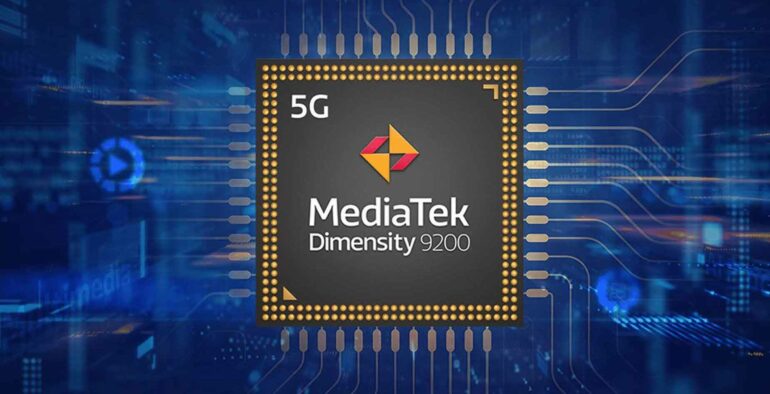MediaTek is still identified with low-cost Android phones, but it’s rapidly finding its way into flagships — and its newest system-on-chip might help. The business has announced the Dimensity 9200 chip, which is advertised as the first SoC suitable for WiFi 7. You’ll need a phone with a suitable network chipset and a WiFi router, but this potentially promises on-device speeds of up to 6.5Gbps while boosting dependability and lowering latency.
The Dimensity 9200 is also the first mobile processor to feature an ARMv9 Gen 2 architecture, as well as new cores. With the assistance of three Cortex-A715 performance cores, a “large” Cortex-X3 core tackles the most demanding tasks. Four low-power Cortex-A510 cores aid in battery life. In simulated studies, the combination provides a modest 10 to 12 per cent gain over the Dimensity 9000 but supposedly reduces power usage by up to 25%.
The most powerful speedups include visuals. The Dimensity 9200 is one of the first processors to utilise ARM’s new Immortalis-G715 GPU, which provides hardware ray tracing, three times the triangle throughput, and improved efficiency. According to MediaTek, it is up to 32% quicker than the GPU in the Dimensity 9000 while utilising 41% less power.
Other enhancements are more modest, but nonetheless beneficial. The 9200, unlike many MediaTek processors, supports both sub-6GHz and millimetre wave 5G, allowing for faster cellular data in more regions of the globe. The Imagiq 890 image signal processor is the first to handle RGBW camera sensors, offering more picture brightness and detail than conventional RGB. It may also be used to counteract motion blur. Support for fast UFS 4.0 storage, the newest LPDDR5X RAM (8.5Gbps), and 24-bit/192KHz audio are also expected.
The first phones powered by the Dimensity 9200 are expected to be ready by the end of 2022. This is unlikely to make Qualcomm nervous, particularly with the Snapdragon 8 Gen 2 on the horizon. This might, however, put MediaTek in more high-end phones, which is excellent for both choice and competition.

